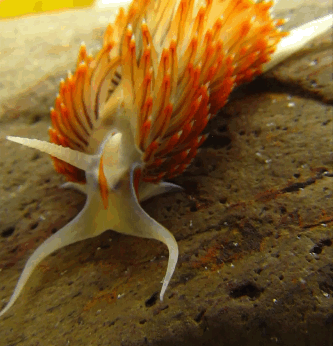
Have you ever been snorkeling and come across a brightly colored sea slug looking like creature? Well that means you may have just stumbled across a nudibranch!
It is estimated that there are over 3,000 species of nudibranchs making these “naked gilled” invertebrates the largest order of opisthobranchs, “sea slugs”, found in our ocean! And because there are such a varied amount of nudibranchs these incredible invertebrates can be classified under one of four suborders:

- Doridina – Dorids make up the largest suborder of nudibranchs. They typically have a flat or tube shaped body as well as branchial plumes, or anal gills.
- Aeolidina – Aeolids make up the second largest suborder of nudibranchs. They have long tubular bodies as well as rows of respiratory organs referred to as cerata.
- Dendronotina – Dendronotids and Melibes have tubular bodies as well as gills in spindle or branched formations.
- Arminina – Arminids are more so the types of nudibranchs that do not fit into the other three suborders. They typically have gills on the side of their body and a velum, or oral veil, on their head.
Nudibranchs have very limited sight. Although they do posses eyespots, nudibranchs can only really detect light with their eyespots; they do not have the ability to see images or color. So unfortunately nudibranchs will never realize how stunning they truly are.
Nudibranchs also lack taste buds therefore they utilize a sense other than taste to find food. These awesome creatures possess rhinophores (“rhino” meaning nose and “phore” meaning carrier) in order to detect chemical molecules in the water and hunt down prey.
Nudibranchs are pretty intelligent creatures because they utilize products from algae and other animals in their day-to-day lives. For example some nudibranchs form symbiotic, mutually beneficial, relationships with chloroplasts and zooxanthellae. They store them in their bodies and then utilize the energy produced by chloroplasts and zooxanthellae either as a source of food or even an energy boost! Aeolids even have the ability to feed upon nematocysts (stinging cells), store them in cnidosacs at the tip of their cerata, and then use these nematocysts as a form of defense!
Written By: Alex Feltes
Sources:
Behrens, David W. Nudibranch Behavior. Jacksonville, FL: New World, 2007
Behrens, David W. Pacific Coast Nudibranchs. Monterey, CA: Sea Challengers, 1991


